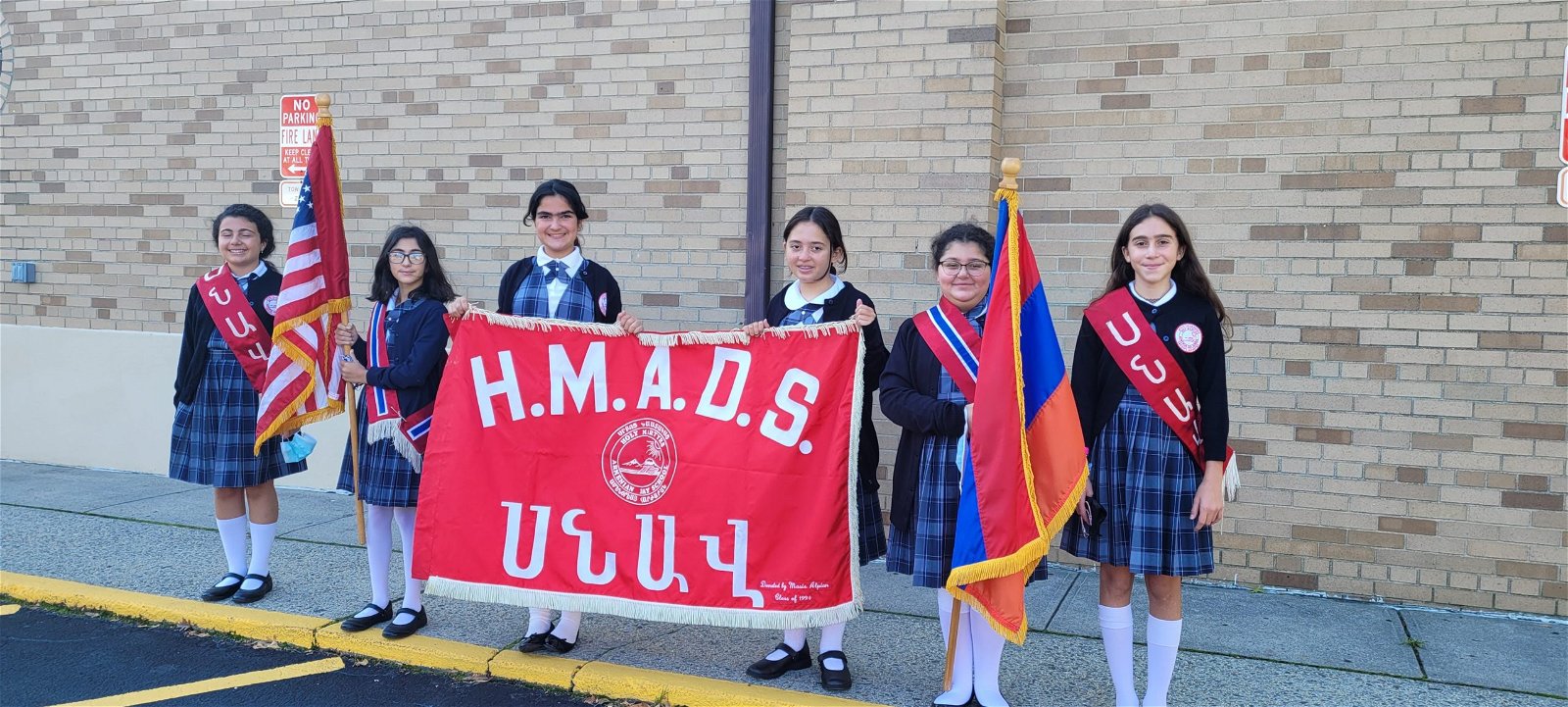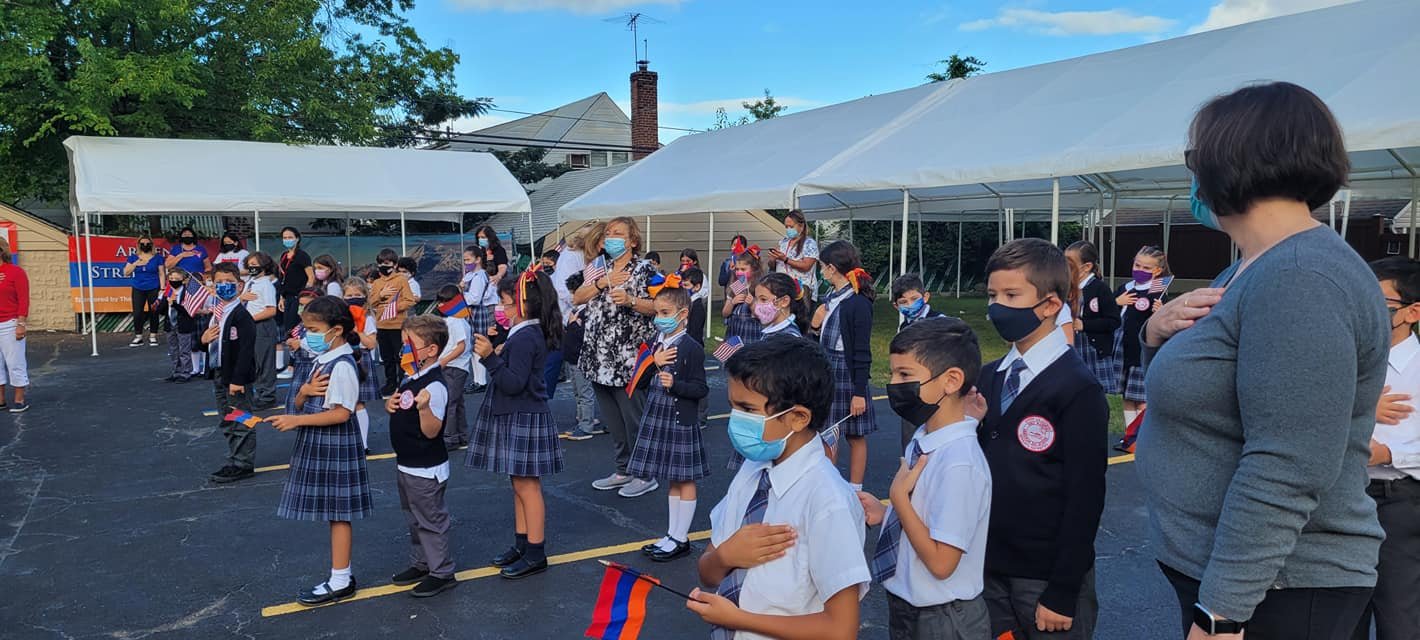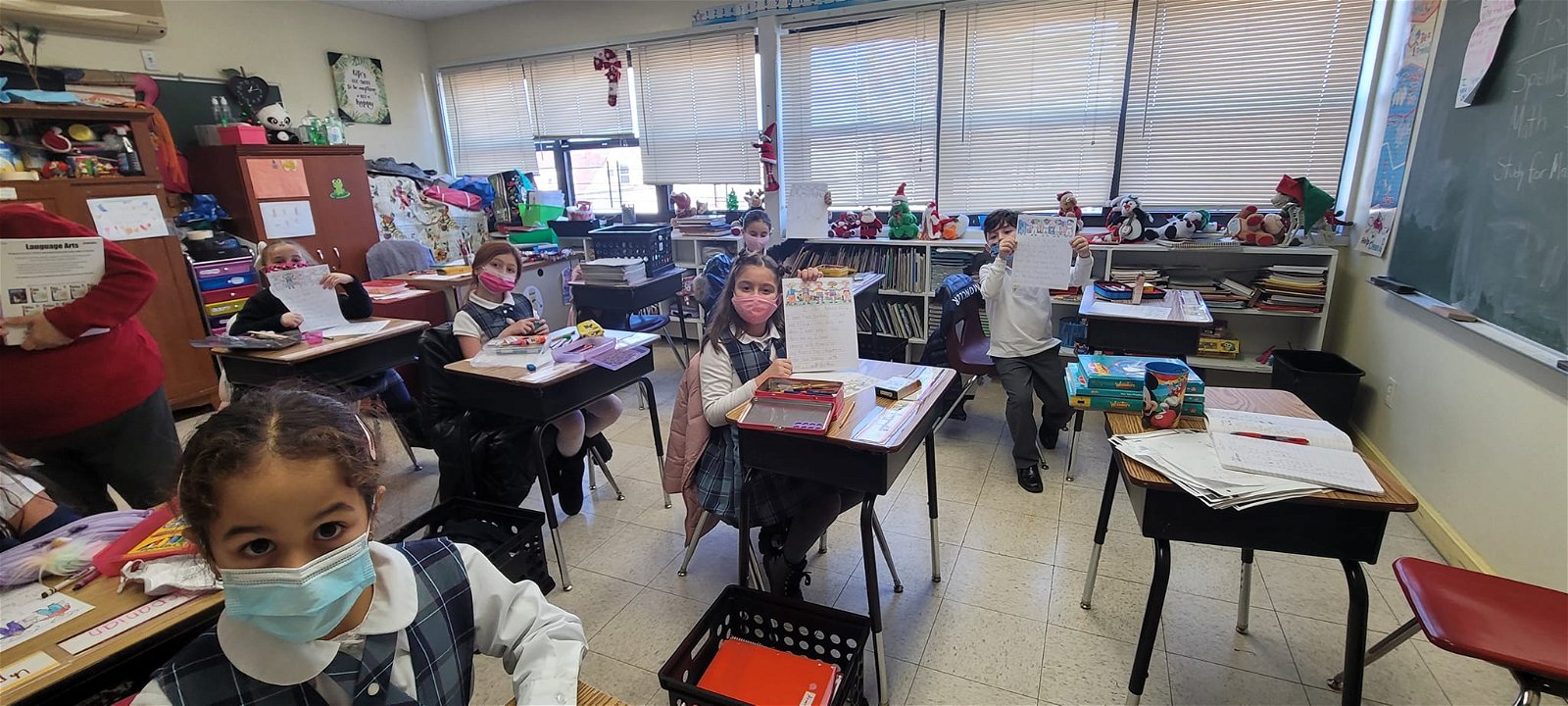Editor’s Note: This profile of Holy Martyrs Armenian Day School in Queens, New York was an assignment for a graduate course titled “Writing and Reporting I” at New York University. It is being published for the first time in print and online in the Armenian Weekly.
Every morning, students gather in an auditorium in Queens to recite the Lord’s Prayer in Armenian.
The students then meet with their grade levels, each consisting of five to 10 students. Some begin the day with their daily Armenian lesson, where they read Armenian literature or study Armenian history or sing Armenian patriotic songs.
Holy Martyrs Armenian Day School is one of 21 private Armenian day schools established across the United States. While offering standard subjects such as English, mathematics and science, Armenian day schools also require students to take classes in Armenian language, history and religion. These schools transmit the Armenian culture and traditional values to younger generations of a diaspora community formed through displacement and dispossession.

Holy Martyrs, founded in 1967, is the only Armenian day school in New York. The small elementary school serves a population of under 100 students in a region with approximately 150,000 Armenians dispersed across New York City, New Jersey and their suburbs.
Principal Seta Tavitian-Megherian believes that the school endows students with the knowledge and pride to represent their heritage to the wider society in a city in which the Armenian minority population is not visible.
“We want to share our food, share our culture, share our experience, share our faith, and that pride is instilled through something like day school,” Tavitian-Megherian said in an interview with the Armenian Weekly.
Tavitian-Megherian has a longstanding relationship with Holy Martyrs. She graduated from the school in 1989 and volunteered for years at its summer camp and youth programs before taking the helm as its leader. She has enrolled her own children at Holy Martyrs, passing on what she sees as the “best gift my parents gave my brother and I.”
“The school gave me a voice. A platform,” Tavitian-Megherian said. “I strongly feel that after graduating, especially when you’re in a class that’s as small as ten, seven [students], you have that sense of identity. You have a sense of who you are and what you need others to know about you.”
Tavitian-Megherian took over this position from her mentor and former principal Zarminé Boghosian in 2015. Boghosian was awarded the St. Sahag-St. Mesrob Medal of Honor and Encyclical bestowed by the order of Karekin II for her over two decades of service to Holy Martyrs.
While teaching at public schools before returning to her alma mater, Tavitian-Megherian relied on her Armenian education when faced with questions about her name and ethnic background from her peers.
“With a name like Seta, it didn’t pan out very well in public school. You had to go through an explanation. I prepared the children for that, as I was prepared for that change. We answer that question with much pride, and our children are so ready to be part of the real world when they leave,” Tavitian-Megherian said.
A central tenet of Armenian education is language preservation. Armenian teachers from Holy Martyrs cite language as critical to protecting the Armenian heritage in the diaspora.

Socy Nigdelian has taught Armenian language and history at Holy Martyrs since 2007.
She grew up in the Armenian diaspora community of Lebanon and trained at the Melkonian Educational Institute in Cyprus.
In her nearly 15 years of teaching, Nigdelian has led the Hye Bardez (“Armenian garden”) program for toddlers, worked as a nursery teacher and written an Armenian picture book. She now teaches elementary students.
“Students have to love speaking the language. I ‘brainwash’ them, as I like to tell them, that they have to strengthen their speaking skills, so that when they grow up, they will teach their kids, who will teach their kids, so that the language and culture do not die,” she said in Armenian, chuckling while using the English word for ‘brainwash.’ “You have to instill a love for the Armenian heritage in them. It isn’t just about teaching.”
Nigdelian believes that Armenian schools must be protected as pillars of the Armenian diaspora.
“It is important to teach students about the homeland, our displacement, but it is also important to keep the diaspora strong,” she said.
Holy Martyrs alumna Natalie Gabrelian has dedicated her career to advancing Armenian education. She serves as Director of Education at AGBU, where she has worked for 13 years developing Armenian educational programming worldwide. Though she graduated from Holy Martyrs over two decades ago, she feels that she has never left.
“The fact that it was a small environment, a small school, where we knew each other very well, it turned from a school to a family,” she said. “You never lose touch with the people.”
Since graduating, Gabrelian has served on the Holy Martyrs school board, education committee and friends of HMADS fundraising committee. Through her continued service to Holy Martyrs, she hopes to convey her gratitude for her Armenian education and ensure the “opportunity I was given is still available for generations to come.”

“You can identify not just fellow alumni, but in general someone who has gone to an Armenian school from across the room. There’s a certain look, a certain way they hold themselves. Once you start a conversation, you’re going to be reminiscing and reflecting and laughing and maybe crying together. There is a golden shared bond,” she said.
Gabrelian carries the appreciation for her heritage and strong work ethic she learned at Holy Martyrs into her professional life. She now explores methods to not only nurture and protect, but also innovate Armenian education.
“Teach [students] the history, the culture, the language, so that it isn’t just something they inherit. It’s something they realize is very much alive and will be alive into the future, and they have the power within them to define it in their own way and then pass it along to, not just generations of Armenians, but stand on that world stage and preach it to the world,” she said.
Tavitian-Megherian says that she has witnessed many alumni like Gabrelian continue to engage with the Armenian community of New York and share their love for their heritage beyond graduation. Prior to the COVID-19 pandemic, Holy Martyrs students often participated in community events, performing in Times Square during Armenian Genocide rallies or singing with the St. Vartan Armenian Apostolic Church choir.

According to Tavitian-Megherian, Armenians have a responsibility to represent their heritage to the community through these kinds of events.
“If we don’t, who will?” she asked rhetorically.



Be the first to comment